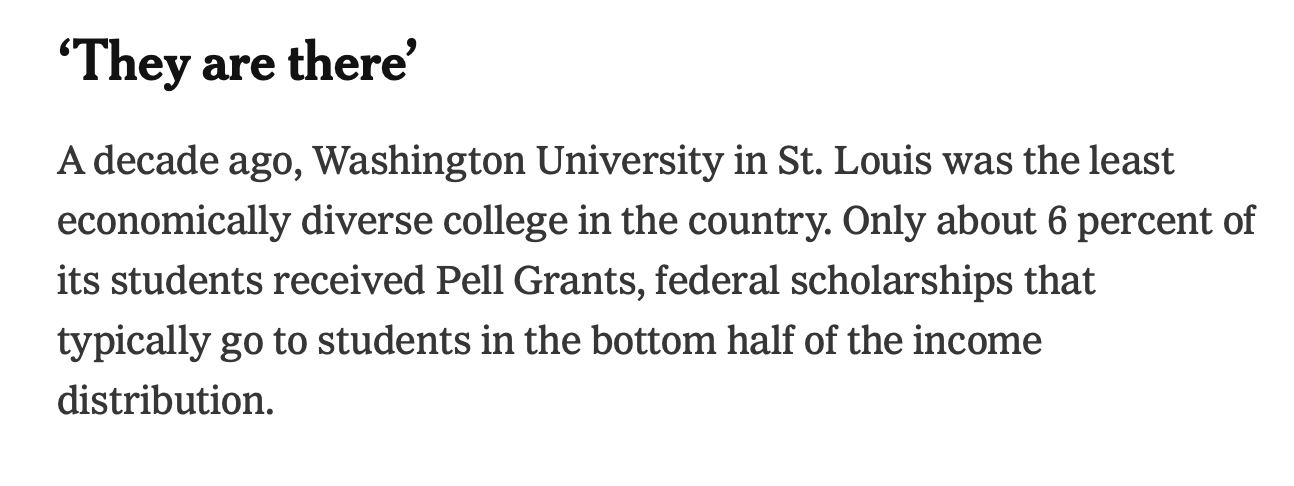During my first week as provost at Washington University in St. Louis, a bombshell story (for us at least) arrived in the New York Times. WashU, owing to its very low share of students from the lowest income brackets - those who qualify for Pell Grants - was labeled as the least economically diverse top college. After some back and forth over what do to, we came up with a plan to correct this that involved increasing the financial aid tax on the schools and moving some money from the endowment. The media attention and the student activism it generated played a crucial and important role in getting us to this point.
From then on, we increased the number of low income students and also the number of Black and hispanic students. We knew from the data from previous years that these changes were not going to lead to a decrease in standardized test scores and other indicators. But for years, the story was that the good students weren’t out there, wouldn’t come to St. Louis, and that we would have to dramatically lower our standards to improve in the New York Times ranking. The truth was, we didn’t want to spend the money, and it’s true that it’s a lot of money - a Pell-eligible student at WashU pays nothing for their education.
In recent years (and after I left), WashU has gone even further - stating that they would go to need-blind admissions and just this week, that they would have a no loan policy. These are all great and impressive steps, and kudos to the new administration for pushing this further.
Meanwhile, the New York Times stopped publishing their index for a few years. They just rolled it out again, and it is a nice story for the formerly least accessible school. Here are the important passages:
As it says in the story, for years, skeptics asked me why the scores weren’t going down. This is based on an assumption that many people have that only wealthy white kids have high scores. For sure, the standardized tests are slanted away from low-income people of color, but the miserably low access to top institutions means there are tons of students of color in the pools with excellent scores.
They were nice to include me in the story. I really loved this chart:
Seeing this in the New York Times felt like a long way from that seemingly bleak day in 2013. But it shows what teamwork and leadership from chancellors like Mark Wrighton and Andrew Martin can do.
Progressive financial aid policies are not the answer to everything, especially because these schools aren’t all that big. But all the people in the green bars above got access to a great education and economic ticket for free or very little.
And that is a great thing for them and hopefully us all in the long run.






I loved seeing this story too! And the new policy on debt-free education is even better.
Holden--I read your quotation in the Times and just want to thank you for your leadership. Now seeing the chart you shared--great legacy, Holden!
And it gets better: I'm sure you caught this, but the class of 2026 is 20% Pell Grant-eligible, 15% first-generation.
All the best--Greg B.